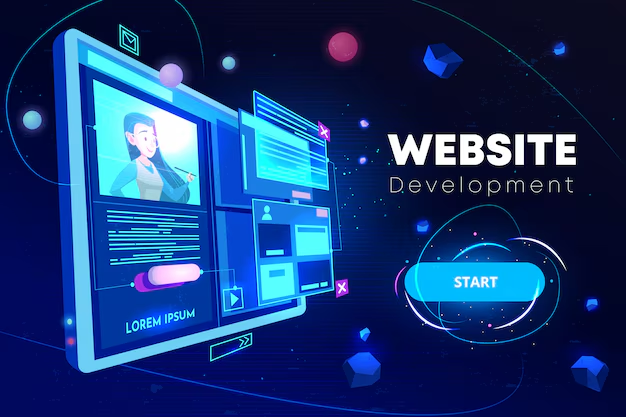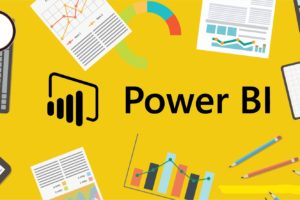Be Careful Before Thinking About Your Business Website: Key Considerations

By Tanu Mittal, Business Head – Rootbix Infotech Pvt Ltd
A website is often the first interaction potential customers have with your business. In today’s digital-first world, a business website acts as your brand’s digital storefront, and it’s critical to get it right. However, building a successful website goes beyond just picking a design template and adding a few pages. There are several important factors to consider before you start working on your website to ensure that it serves as an effective tool for attracting customers, building trust, and driving business growth.
At Rootbix Infotech, we’ve worked with countless businesses to create websites that reflect their brand and support their goals. Here are some key considerations to be mindful of before launching into the website development process.
1. Define Your Purpose and Goals
Before you start building your website, take a step back and clearly define its purpose. Are you looking to create an e-commerce platform to sell products? Or do you need a simple informational website to establish your company’s online presence? Knowing your objectives will guide your design and content choices.
For example, if your goal is lead generation, your website should be optimized for capturing visitor information with clear calls-to-action (CTAs) and user-friendly forms. If your business is primarily e-commerce, you’ll need a seamless shopping experience with intuitive navigation, product categorization, and secure payment processing.
2. Know Your Target Audience
Understanding who your audience is and what they need is critical to your website’s success. Your website should cater to your specific target demographic—whether they are tech-savvy millennials, corporate clients, or local customers looking for services. Knowing your audience helps in making informed decisions about your website’s design, tone, functionality, and content.
For example, if your audience prefers mobile browsing, ensuring your website is mobile-friendly should be a top priority. You’ll want to create a responsive design that adjusts to different devices, providing a seamless user experience no matter how visitors access your site.
3. Choose the Right Platform and Technology
There are many platforms available for building business websites, ranging from simple website builders like Wix and Squarespace to more sophisticated content management systems (CMS) like WordPress, Magento, or custom-built solutions. The platform you choose should align with your business goals, technical capabilities, and long-term growth plans.
For example, if you plan on expanding your business into e-commerce, a platform like Shopify or WooCommerce might be better suited. If you’re looking for a more flexible and scalable option, a custom-built CMS might be necessary. Choosing the wrong platform can lead to challenges in scaling, security risks, and increased maintenance costs down the line.
4. Prioritize User Experience (UX)
A website that is difficult to navigate or slow to load will turn away potential customers faster than anything else. Before diving into design, consider how visitors will interact with your site. The user experience (UX) should be intuitive, making it easy for visitors to find what they need with minimal effort.
Make sure your site’s layout is clean, content is organized logically, and navigation menus are simple to use. Additionally, consider the load times—research shows that users are likely to abandon websites that take more than a few seconds to load. Investing in good hosting and optimizing images and code will keep your site fast and efficient.
5. Create High-Quality, SEO-Optimized Content
Content is king when it comes to websites. Your site should include relevant, high-quality content that not only speaks to your audience but also helps improve your search engine rankings. Search Engine Optimization (SEO) should be a priority from the outset, ensuring that your website ranks well in Google and other search engines.
Ensure your content is well-organized, easy to read, and tailored to specific keywords related to your industry. Beyond just written content, consider the types of media that will engage your audience—such as videos, infographics, or downloadable resources.
6. Focus on Security
Security should be a major consideration when building your business website, especially if you handle sensitive customer data or process online transactions. Cyberattacks and data breaches can damage your reputation and lead to financial losses, so it’s essential to invest in robust security measures from the start.
Ensure that your website has an SSL certificate, which will encrypt user data and provide trust signals (like the “lock” icon) to your visitors. Also, consider ongoing maintenance and updates to protect your site from vulnerabilities and malicious attacks.
7. Set a Realistic Budget
Creating a website is an investment, but that investment needs to be made wisely. It’s important to set a realistic budget based on the scale and complexity of your website. A small business informational website will likely have a lower cost compared to a fully functional e-commerce platform or custom web application.
However, be mindful that cutting corners or choosing the cheapest options can backfire in the long run. Make sure your budget accounts not only for the initial build but also for ongoing maintenance, hosting, security updates, and potential future upgrades.
8. Mobile Optimization is a Must
With more users accessing the internet via mobile devices than desktops, ensuring your website is mobile-friendly is crucial. A website that isn’t optimized for mobile devices will not only frustrate users but also negatively impact your search engine rankings. Google’s mobile-first indexing means that websites optimized for mobile devices are prioritized in search results.
Responsive design—where your website adapts to different screen sizes—should be a non-negotiable feature. This ensures that your site looks great and functions smoothly on smartphones, tablets, and desktops alike.
9. Plan for Ongoing Maintenance and Updates
A business website is not a one-time project. Once it’s live, it requires ongoing maintenance to ensure everything functions smoothly, remains secure, and stays updated with the latest information. Regular updates, content refreshes, and SEO optimizations will keep your website relevant and valuable to your audience.
You’ll also need to monitor your website’s performance, making adjustments as needed based on user feedback and analytics data. Setting aside time and resources for this maintenance is critical for long-term success.
10. Integrate Analytics and Tracking
Understanding how visitors interact with your website is key to making informed decisions about future improvements. Tools like Google Analytics allow you to track important metrics such as visitor demographics, page views, bounce rates, and conversion rates. By analyzing this data, you can make adjustments to your site’s design, content, or structure to improve user engagement and drive more conversions.
Conclusion
Your business website is one of the most important tools for establishing your brand, attracting new customers, and generating revenue. However, it’s critical to approach the process with careful consideration of your goals, audience, technology, and long-term needs. By addressing these factors early on, you can avoid common pitfalls and build a website that effectively supports your business growth.
At Rootbix Infotech, we specialize in creating custom, high-performing websites that help businesses succeed in the digital landscape. Whether you’re just starting out or looking to upgrade an existing website, we’re here to guide you through every step of the process.
Tanu Mittal is the Business Head of Rootbix Infotech Pvt Ltd, specializing in digital strategy, website development, and content management.






